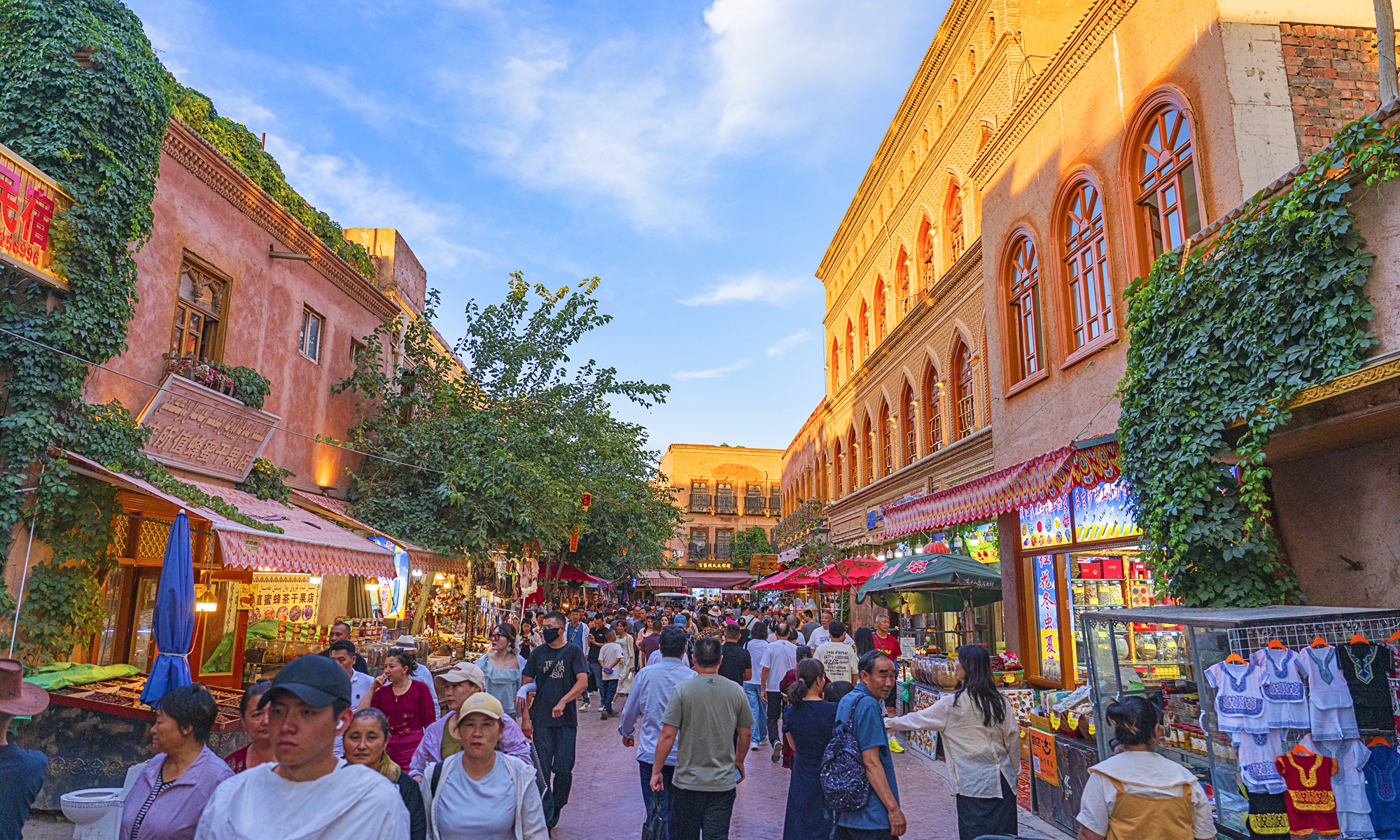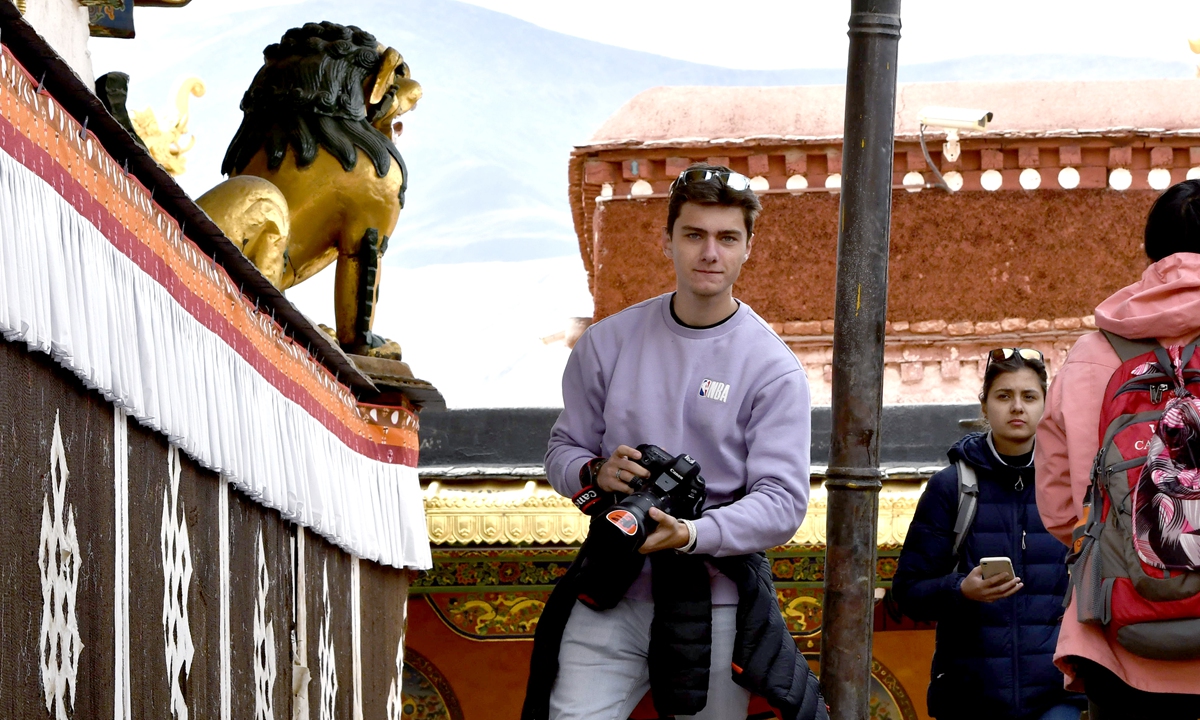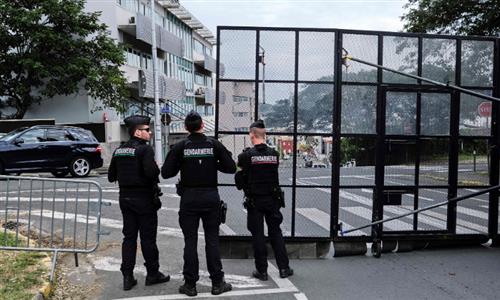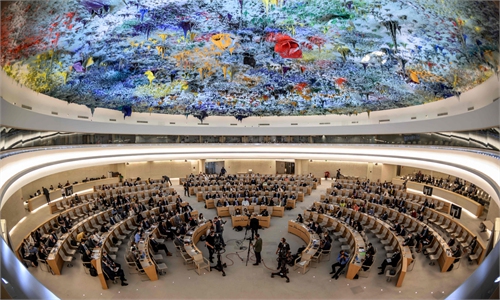IN-DEPTH / IN-DEPTH
‘Adventures’ of foreign vloggers in Xinjiang and Xizang regions reveal a diverse, peaceful China
Editor's Note:
Over 700 years ago, Italian traveler Marco Polo journeyed through China, documenting his experiences and introducing the splendor of ancient China to Europe in his book. Fast forward to the present day, when people discover China through online videos. With China's visa-free policies and the introduction of 144-hour visa-free transit, a wave of international YouTubers and vloggers has flocked to China.
After exploring gateway cities, where they gain initial insights into China's modern cityscapes and rich cultural heritage, these YouTubers and vloggers soon turn their attention to localized regions, delving into frontier areas, revolutionary sites, and public infrastructure to find the answers to the questions: "What is modern China like, why is it the way it is, and how does it function?" Through their cameras, they present a real, friendly, and vibrant China to the world. They are affectionately referred to by the Chinese as the "Marco Polos" in the New Era.
Therefore, the Global Times presents this "Marco Polo" Trilogy. In the first story, we shared the story of those young travelers who have ventured into China's border regions. Their videos and posts showcase the vast grasslands and bustling markets of Northwest China's Xinjiang Uygur Autonomous Region, and the majestic mountains and mysterious temples of Southwest China's Xizang Autonomous Region, displaying to the world a diverse and peaceful China.

"I am in Xinjiang... the most controversial region of the country." This is the first sentence uttered by German travel content creator "Ken Abroad," in a video he shared on YouTube in February.
"In this video, we will get impressions of this Uygur Autonomous Region, which is over Western media for not-so-good reasons," he says, while walking on a snowy street in Urumqi, capital of Northwest China's Xinjiang Autonomous Region. "Let's see what life is really like here."
Ken Abroad is among an increasing number of international vloggers who have visited Xinjiang with great curiosity. A somewhat remote and mysterious region in China, Xinjiang is nonetheless a name constantly spotlighted in many Western media stories, which are usually filled with misinformation.
Many travel vloggers including Ken Abroad and their audiences are eager to get a closer look at Xinjiang in person. "I am curious to see things with my own eyes. So, I booked a flight to Urumqi," Ken Abroad wrote in the video caption, which garnered over 800,000 views as of the end of February.
"According to some comments on my channel, I would not be allowed to enter, as the region is apparently closed to foreigners. Well, I was able to enter without any problems and soon after I found myself exploring the city center of Urumqi," wrote the vlogger with 356,000 YouTube subscribers.
The first time Ken Abroad visited China was at the end of 2023, when he only visited Shanghai. "I had a Chinese friend at university, and I also made a Chinese friend on other travels. Both of them told me so many great things about China," he told the Global Times. "That made me curious to visit the country."
Ken Abroad's vlogs about his visits to China have amassed millions of views thus far. "I am happy to see that so many people watched my China-related videos, and the responses I got were overall mostly positive," he said.
In the Urumqi tour video, Ken Abroad said that he understood Xinjiang from some Western media reports which claimed that "Uygur Muslim here are being oppressed, and they can't practice Islam."
"[Let's] see if we can find any mosques," he said.
Then the video cuts to views of different mosques across the city. In the vlog, Ken Abroad also tasted local snacks and talked to locals. He asked about the opening times of the nearby mosques and received friendly responses.
"[An] interesting fact about the mosques here, as I read before, is that Xinjiang, this region of China, has more mosques than the US or any Western countries in Europe do," Ken Abroad said in the video while walking on the street.
"And, ...do you have the impression so far that the majority of people that we spoke to today, we interacted with, we saw, were Muslims?" he asked. "Yet the Western media are trying to tell us that the Muslims are being oppressed here by the Chinese government; that they don't live a normal life. I don't want to judge now, but just asking you, what is your impression of the people that we have seen so far?"
'Is that real?'
Compared with Xinjiang, Xizang region might appear even more mysterious.
Due to Xizang's high altitude and harsh climate, as well as the challenging rescue and medical conditions in some inaccessible areas, there are certain precautions in place, according to local authorities.
To prevent such incidents, authorities implemented the Entry Permit requirement. This permit allows them to confirm the traveler's itinerary and provide appropriate services, including medical support if needed.
However, some of the most daring travelers have made Xizang the ultimate destination on their bucket lists when exploring China.
Birat Aanupam, a young journalist and writer from Nepal, remarked "For me, Lhasa felt like home."
He noted that the sweet tea served in Lhasa is a familiar drink enjoyed daily across Nepal, and he found it easy to pronounce Tibetan names and understand Tibetan culture, as Nepal shares aspects of this Himalayan culture, tradition, and lifestyle.
Lhasa's Barkhor Street, where Nepali traders have maintained a presence for centuries, was another unforgettable sight for him. The presence of Nepal's Consulate General, Lhasa's only diplomatic mission, also held significant meaning.

Aanupam was amazed by Xizang's development. His 435-kilometer-long journey aboard a bullet train from Nyingchi to Lhasa provided a striking example of Xizang's rapid progress.
He saw no conflict between development and traditional practices, observing road signs in English, Putonghua, and Tibetan, as well as monks using smartphones.
Aanupam told the Global Times that the Xizang he imagined was both similar to and different from reality. The similarities lay in the friendly locals and well developed infrastructure, while the differences were in the deference shown for the local language, culture, and traditions.
Aanupam observed that foreign perceptions of Xizang have begun to shift slightly, with people starting to see the region differently.
After sharing videos of rail travel and conversations with locals in Xizang on social media platforms like YouTube, TikTok, Reel, X, and Facebook, many of Aanupam's friends began asking, "Is Xizang really like this?"
Safe and comfortable
"Xinjiang is not what you think!" "Unbelievable impression in Lhasa!" Alongside thumbnails featuring exaggerated expressions, such videos have been emerging on YouTube in recent months.
In the past year alone, at least five YouTubers with over 100,000 subscribers have posted travel vlogs about their journeys to Xinjiang, amassing millions of views.
Whether in Xinjiang or Xizang, in the videos, these vloggers encountered kind and friendly locals, felt comfortable and safe, and discovered that these regions, while preserving their unique cultures and cuisines, are just as convenient as other parts of China.
One viewer's comment under a latest Lhasa vlog on YouTube channel "Josie lifts things" reads, "I don't think there is a country that cares for its people as much as China. Just knowing the geographical location of Xizang, you can see how much the Chinese government loves Tibet. There's even a 5G network at an altitude of over 5,000 meters, and the hydropower facilities are perfect. These projects are very challenging."
British budget travel blogger Mike Okay recently hitchhiked to Kashi, the cultural center of the Uygur people in Xinjiang. He documented his journey, including being picked up by a friendly truck driver from North China's Inner Mongolia Autonomous Region.
While on his travels, Mike Okay recorded at least three instances of being stopped by Xinjiang police for passport checks. Although the officers were friendly - one even bought him traditional Xinjiang naan bread to try - Mike Okay still found the frequent checks puzzling.
His confusion was cleared up at the end of his recent video. While staying overnight at a camping park in Aksu Prefecture, which had well equipped facilities including bathrooms and water, he was approached by a few police officers who recorded his information before leaving.
A manager at the camping park, who later sat down to have tea with Mike Okay, used a translation app to explain that the checks were not a sign of any problem.
On the contrary, since foreign tourists are rare in the area, the police needed to document his presence to ensure no incidents occurred.
"This is for your safety," the manager said.
An increasing number of people have come to understand that the intensified efforts on enhancing security in Xinjiang is not an overreaction.
From 1990 to the end of 2016, ethnic separatist forces, religious extremist forces, and violent terrorist groups plotted and carried out thousands of violent terrorist attacks in Xinjiang, resulting in a large number of innocent civilian casualties. Since 2014, authorities have dismantled 1,588 terrorist groups, arrested 12,995 terrorist suspects, and seized 2,052 explosive devices. The infiltration of extremism has been effectively curbed, and public security has significantly improved, greatly protecting the basic rights of all ethnic groups in Xinjiang, including the right to life, health, and development.
With several consecutive years free from violent incidents, local residents have come to deeply cherish this sense of security. According to China Youth Daily, the public safety index in Xinjiang increased from 87.58 percent in 2012 to 99.14 percent in 2021. Xinjiang has achieved lasting stability and prosperity.
Over 700 years ago, Italian traveler Marco Polo journeyed through China, documenting his experiences and introducing the splendor of ancient China to Europe in his book. Fast forward to the present day, when people discover China through online videos. With China's visa-free policies and the introduction of 144-hour visa-free transit, a wave of international YouTubers and vloggers has flocked to China.
After exploring gateway cities, where they gain initial insights into China's modern cityscapes and rich cultural heritage, these YouTubers and vloggers soon turn their attention to localized regions, delving into frontier areas, revolutionary sites, and public infrastructure to find the answers to the questions: "What is modern China like, why is it the way it is, and how does it function?" Through their cameras, they present a real, friendly, and vibrant China to the world. They are affectionately referred to by the Chinese as the "Marco Polos" in the New Era.
Therefore, the Global Times presents this "Marco Polo" Trilogy. In the first story, we shared the story of those young travelers who have ventured into China's border regions. Their videos and posts showcase the vast grasslands and bustling markets of Northwest China's Xinjiang Uygur Autonomous Region, and the majestic mountains and mysterious temples of Southwest China's Xizang Autonomous Region, displaying to the world a diverse and peaceful China.

Tourists and locals walk through the old town of Kashi in Northwest China's Xinjiang Uygur Autonomous Region on June 18, 2024. The old town of Kashi is home to one of the largest surviving earthen buildings in the world, the oldest of which can date back more than 400 years. It is also one of top travel destinations in Xinjiang. Photo: VCG
"I am in Xinjiang... the most controversial region of the country." This is the first sentence uttered by German travel content creator "Ken Abroad," in a video he shared on YouTube in February.
"In this video, we will get impressions of this Uygur Autonomous Region, which is over Western media for not-so-good reasons," he says, while walking on a snowy street in Urumqi, capital of Northwest China's Xinjiang Autonomous Region. "Let's see what life is really like here."
Ken Abroad is among an increasing number of international vloggers who have visited Xinjiang with great curiosity. A somewhat remote and mysterious region in China, Xinjiang is nonetheless a name constantly spotlighted in many Western media stories, which are usually filled with misinformation.
Many travel vloggers including Ken Abroad and their audiences are eager to get a closer look at Xinjiang in person. "I am curious to see things with my own eyes. So, I booked a flight to Urumqi," Ken Abroad wrote in the video caption, which garnered over 800,000 views as of the end of February.
"According to some comments on my channel, I would not be allowed to enter, as the region is apparently closed to foreigners. Well, I was able to enter without any problems and soon after I found myself exploring the city center of Urumqi," wrote the vlogger with 356,000 YouTube subscribers.
The first time Ken Abroad visited China was at the end of 2023, when he only visited Shanghai. "I had a Chinese friend at university, and I also made a Chinese friend on other travels. Both of them told me so many great things about China," he told the Global Times. "That made me curious to visit the country."
Ken Abroad's vlogs about his visits to China have amassed millions of views thus far. "I am happy to see that so many people watched my China-related videos, and the responses I got were overall mostly positive," he said.
In the Urumqi tour video, Ken Abroad said that he understood Xinjiang from some Western media reports which claimed that "Uygur Muslim here are being oppressed, and they can't practice Islam."
"[Let's] see if we can find any mosques," he said.
Then the video cuts to views of different mosques across the city. In the vlog, Ken Abroad also tasted local snacks and talked to locals. He asked about the opening times of the nearby mosques and received friendly responses.
"[An] interesting fact about the mosques here, as I read before, is that Xinjiang, this region of China, has more mosques than the US or any Western countries in Europe do," Ken Abroad said in the video while walking on the street.
"And, ...do you have the impression so far that the majority of people that we spoke to today, we interacted with, we saw, were Muslims?" he asked. "Yet the Western media are trying to tell us that the Muslims are being oppressed here by the Chinese government; that they don't live a normal life. I don't want to judge now, but just asking you, what is your impression of the people that we have seen so far?"
'Is that real?'
Compared with Xinjiang, Xizang region might appear even more mysterious.
Due to Xizang's high altitude and harsh climate, as well as the challenging rescue and medical conditions in some inaccessible areas, there are certain precautions in place, according to local authorities.
To prevent such incidents, authorities implemented the Entry Permit requirement. This permit allows them to confirm the traveler's itinerary and provide appropriate services, including medical support if needed.
However, some of the most daring travelers have made Xizang the ultimate destination on their bucket lists when exploring China.
Birat Aanupam, a young journalist and writer from Nepal, remarked "For me, Lhasa felt like home."
He noted that the sweet tea served in Lhasa is a familiar drink enjoyed daily across Nepal, and he found it easy to pronounce Tibetan names and understand Tibetan culture, as Nepal shares aspects of this Himalayan culture, tradition, and lifestyle.
Lhasa's Barkhor Street, where Nepali traders have maintained a presence for centuries, was another unforgettable sight for him. The presence of Nepal's Consulate General, Lhasa's only diplomatic mission, also held significant meaning.

Foreign tourists visit the Jokhang Temple in Lhasa, Southwest China's Xizang Autonomous Region. Photo: VCG
Aanupam was amazed by Xizang's development. His 435-kilometer-long journey aboard a bullet train from Nyingchi to Lhasa provided a striking example of Xizang's rapid progress.
He saw no conflict between development and traditional practices, observing road signs in English, Putonghua, and Tibetan, as well as monks using smartphones.
Aanupam told the Global Times that the Xizang he imagined was both similar to and different from reality. The similarities lay in the friendly locals and well developed infrastructure, while the differences were in the deference shown for the local language, culture, and traditions.
Aanupam observed that foreign perceptions of Xizang have begun to shift slightly, with people starting to see the region differently.
After sharing videos of rail travel and conversations with locals in Xizang on social media platforms like YouTube, TikTok, Reel, X, and Facebook, many of Aanupam's friends began asking, "Is Xizang really like this?"
Safe and comfortable
"Xinjiang is not what you think!" "Unbelievable impression in Lhasa!" Alongside thumbnails featuring exaggerated expressions, such videos have been emerging on YouTube in recent months.
In the past year alone, at least five YouTubers with over 100,000 subscribers have posted travel vlogs about their journeys to Xinjiang, amassing millions of views.
Whether in Xinjiang or Xizang, in the videos, these vloggers encountered kind and friendly locals, felt comfortable and safe, and discovered that these regions, while preserving their unique cultures and cuisines, are just as convenient as other parts of China.
One viewer's comment under a latest Lhasa vlog on YouTube channel "Josie lifts things" reads, "I don't think there is a country that cares for its people as much as China. Just knowing the geographical location of Xizang, you can see how much the Chinese government loves Tibet. There's even a 5G network at an altitude of over 5,000 meters, and the hydropower facilities are perfect. These projects are very challenging."
British budget travel blogger Mike Okay recently hitchhiked to Kashi, the cultural center of the Uygur people in Xinjiang. He documented his journey, including being picked up by a friendly truck driver from North China's Inner Mongolia Autonomous Region.
While on his travels, Mike Okay recorded at least three instances of being stopped by Xinjiang police for passport checks. Although the officers were friendly - one even bought him traditional Xinjiang naan bread to try - Mike Okay still found the frequent checks puzzling.
His confusion was cleared up at the end of his recent video. While staying overnight at a camping park in Aksu Prefecture, which had well equipped facilities including bathrooms and water, he was approached by a few police officers who recorded his information before leaving.
A manager at the camping park, who later sat down to have tea with Mike Okay, used a translation app to explain that the checks were not a sign of any problem.
On the contrary, since foreign tourists are rare in the area, the police needed to document his presence to ensure no incidents occurred.
"This is for your safety," the manager said.
An increasing number of people have come to understand that the intensified efforts on enhancing security in Xinjiang is not an overreaction.
From 1990 to the end of 2016, ethnic separatist forces, religious extremist forces, and violent terrorist groups plotted and carried out thousands of violent terrorist attacks in Xinjiang, resulting in a large number of innocent civilian casualties. Since 2014, authorities have dismantled 1,588 terrorist groups, arrested 12,995 terrorist suspects, and seized 2,052 explosive devices. The infiltration of extremism has been effectively curbed, and public security has significantly improved, greatly protecting the basic rights of all ethnic groups in Xinjiang, including the right to life, health, and development.
With several consecutive years free from violent incidents, local residents have come to deeply cherish this sense of security. According to China Youth Daily, the public safety index in Xinjiang increased from 87.58 percent in 2012 to 99.14 percent in 2021. Xinjiang has achieved lasting stability and prosperity.





